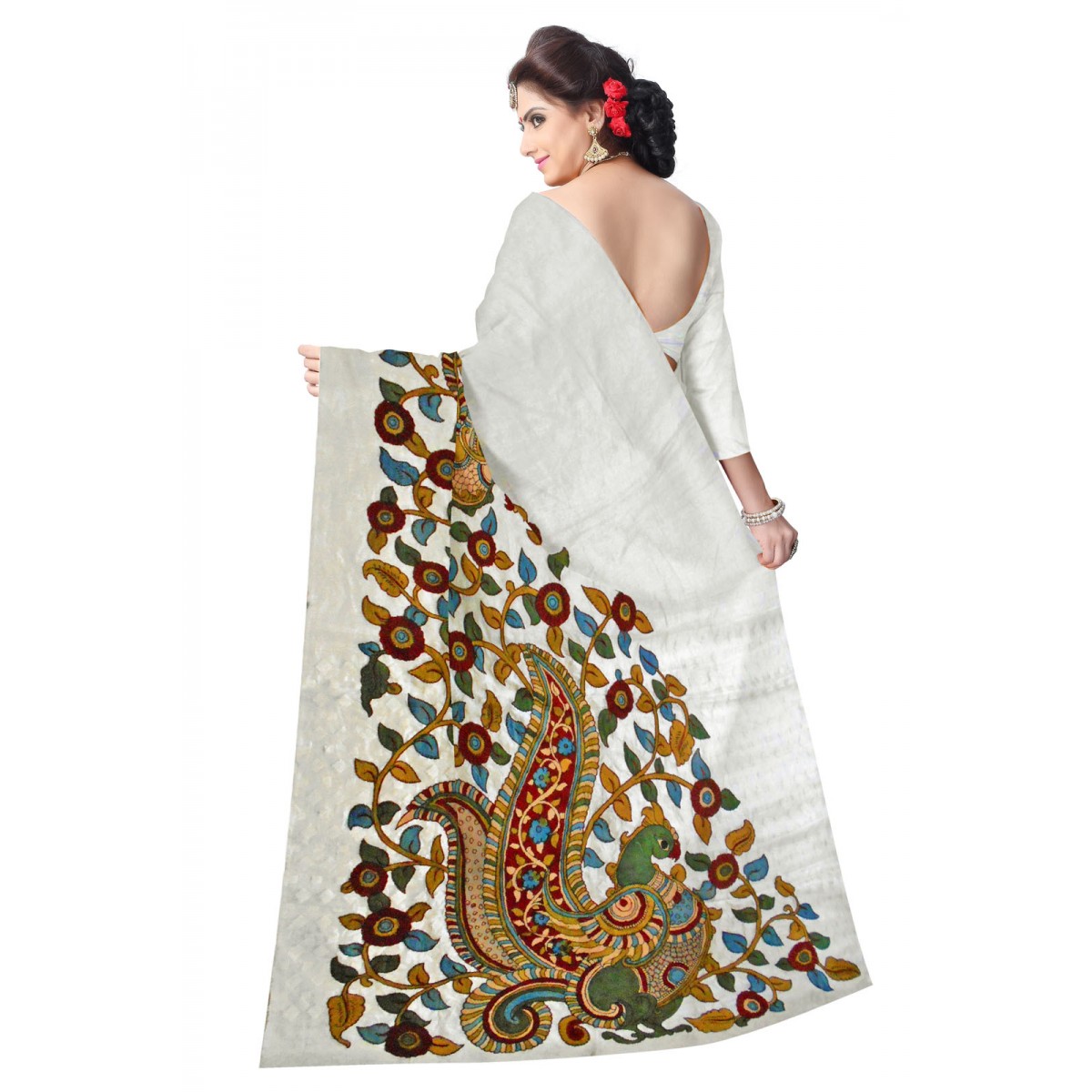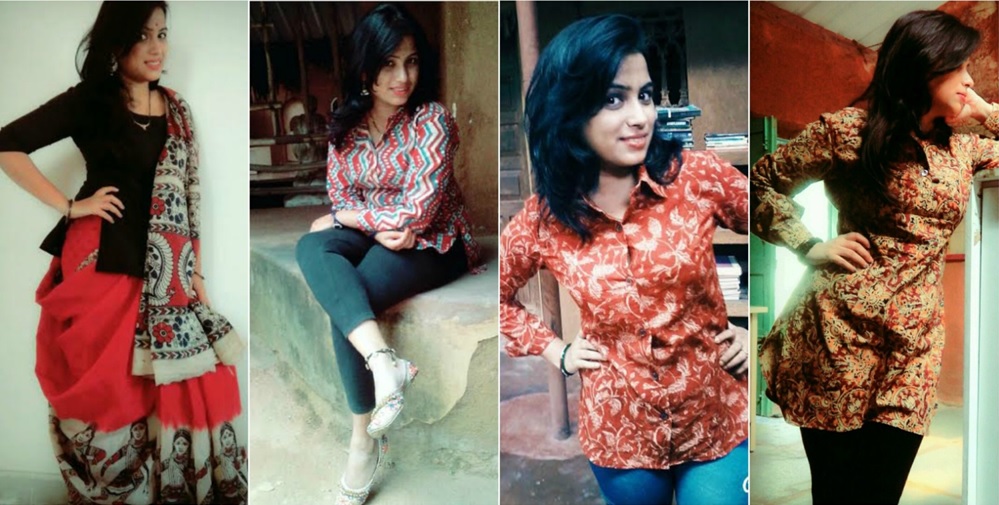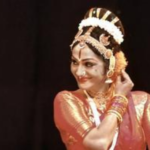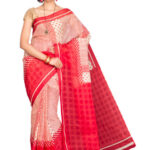The following Post was composed by Sheetal Mishra.She is Fashion writer at IndicPortal
So Monday again !!! When the rest of the world searches for motivations to get back to its work place, I enjoy my weekly off. Usually on Mondays I prefer to sleep, sleep and sleep… But surprisingly this Monday is motivating me to write something. Something about my favorites, like the finest handlooms of the Telugu states. Few of my favorites are Pochampalli, Mangalagiri, Uppada and Kalamkari of which Kalamkari holds a special place in my heart.
50% of my wardrobe is being taken by Kalamkari palazzos, jackets, sarees, short kurtas, long kurtas, skirts even kalamkari bags… I am fortunate enough to work in a place where I get to meet a lot of handloom weavers and vendors. So I take pleasure in sharing a few tidbits about this wonder weaving style…
How it originated …
In this busy life we often pick up things in rush. We don’t bother to look into the hardship and passion which go into its making. Each piece of fabric carries a rich history and has a story tell which goes unnoticed and unappreciated. Let’s dig the cultural history of India a bit to track the origins of the Kalamkari Fabric.
Indian society has a rich tradition of folklores, folk arts and dances. In ancient times, people traveled from one village to other narrating stories of Hindu mythology. Later people evolved various methodologies to make these story-telling sessions more effective. Representing stories through paintings, songs and dance was very commonly used. The Pattachitra, Cheriyala, Madhubani and other styles of art were widely used for this purpose. Even now you will find traditional craftsmen singing songs based on their paintings. In fact, Kalamkari is related to the traditional art of Pattachitra (still called by that name in neighboring Odisha). Though they have both become their own separate styles, they share a common origin in Temple painting as prescribed by the Sastras.
And no wonder this is how Kalamkari came into existence.
The Kalamkari tradition chiefly consists of scenes from Hindu mythology. Figures of deities with rich border embellishments were created for the temples. In Machilipatnam, the weavers were involved in the block printing art, while at Kalahasti, the Balijas (a caste involved in making bangles) took to this art and gave it a free hand dimension. Kalamkari is basically done on cotton fabrics with pens or blocks.
Kalamkari art or hand printing can be broadly categorized into two major forms – Machilipatnam Style and Srikalahasti Style. Machilipatnam style is dominated by block prints where Srikalahasti style is famous for its free hand drawings. As for the process, “there were 12 steps employed at Masulipatnam (this after the cloth has been woven) and 17 steps at Sri Kalahasti.” [4] Kalahasti is near the famous temple town of Tirupathi, and Machilipatnam is on the central coast.
The Kalahasti style developed around the temples with their patronage. As a result it has a distinct religious identity and thrives on mythological themes. The attractive blend of colors on the fabrics usually portrays characters from the Indian mythology. with the divinity figures of Brahma, Saraswati, Ganesh, Durga, Shiva, Parvati as the main source of inspiration [3]
While the traditional art was practiced in the ancient period of Andhra desa, there were changes during the medieval era. Owing to the Qutb Shahi period of Golkonda, the Machlipatnam Kalamkari was influenced by Persian motifs & designs, widely adapted to suit their taste. The outlines and main features are done using hand carved blocks. Srikalahasti, however, remains more traditional and in line with the ancient standard.
The term Kalamkari itself signifies artwork (Kari) done by a “Kalam” (Pen). Despite the recent name, the technique is very ancient and precedes the period of Turco-Persian influence, making it a native Andhra craft [4]. Kalam, which gives the characteristic look to this art, is traditionally made of bamboo. Craftsmen pick fine bamboo sticks and rolls around few strings of thread for the grip. This helps in getting the fine strokes of this unique variety of handloom. Craftsmen prepare colors from vegetable and root extracts which are very good for skin too.
The beginnings of Kalamkari probably rest in South India and grew out of the need to illustrate some of the temple rituals. The temples commissioned large religious themed cloths.[4]
What I heard from weavers…

On a lazy Sunday evening I was just checking out some Kalamkari sarees from a vendor. As any girl would like to, I started bargaining on the Saree. The vendor who happened to be a craftsman also, narrated the process of making the Kalamkari Saree. I was taken aback!!! The Saree they sell for only 1500 bucks actually takes a month’s time to get ready. It takes months to prepare the fabric and the natural colors. Then they draw designs and patterns and fill it properly with hands.The entire process requires 17 complex steps to complete. The process starts with the bleaching the cotton fabric in a solution mixed with cow /sheep dung. Later, the fabric is washed and rinsed number of times in clean water. The bleaching process takes a couple of days.
Once it is done, the next step is to soak the bleached fabric in a special solution called myrobalam prepared with milk and resins. Then the fabric is left for sun drying. Once it’s dry and crisp, it becomes the canvas for the craftsmen. Craftsmen paint patterns and designs in series and each time they have wash it again and again to get the desired look.
What different articles tell about Kalamkari –
An article written by Kishore Singh in Forbes India dated Apr 16, 2016 says “ In terms of story-telling, the Kalamkari painted cloth tries to provide a religious or historical narrative, often in the form of panels, with or without a dominant central figure.”
An article on Kalamkari says– “The Kalamkari tradition is more than three thousand years old. The earliest fabrics amples of this craft found in the Mohenjo-daro excavations date back to 3000 B.C. Some samples of Madder dyed cloth with traditional Indian motifs have also been discovered in Egyptian tombs during excavations at Al Fustat near Cairo. These bear testimony not only to the antiquity of the craft but also prove that it was well developed and formed part of a flourishing export in ancient times.”
An article on Chitrolekha says– “The Kalahasti style developed around the temples with their patronage. As a result it has a distinct religious identity and thrives on mythological themes. The attractive blend of colors on the fabrics usually portrays characters from the Indian mythology. with the divinity figures of Brahma, Saraswati, Ganesh, Durga, Shiva, Parvati as the main source of inspiration. The Kalahasti artists generally depict on the cloth the deities, scenes from the Ramayana, the Mahabharata, Puranas and other mythological classics mainly producing scrolls, temple backcloths, wall hangings, chariot banners and the like. In ancient times, the common man learned of gods and goddesses, and of their mythical character from these paintings.”
And here goes my personal touch to the article –
As you might have sensed from this article, I am crazy about Kalamkari fabrics. I won’t do justice to my article if I won’t share few clicks from my beautiful Kalamkari collection…..
So as you see, Kalamkari, apart from being a weaving style, is the life and livelihood of many traditional artisans of The Telugu States. This generation should stand up to promote our ancient handloom weaving techniques which have a lot of stories and historical references connected with them. Our act of supporting handloom will pave way to pass on cultural values to posterity. When handloom is being promoted as a part of “Make in India” by our Government, it is our responsibility to add it to our wardrobe too.
Hope my article urges you to pick Kalamkari fabrics for your family. By doing this you will not just support the craftsmen involved in this, but also will adapt a healthier life style by wearing pure cotton or silk and chemical free clothes.
References:
- Bhatnagar, Parul. Kalamkari. https://www.scribd.com/fullscreen/65619463?access_key=key-1i4e4emilphei76vaxgl
- http://www.forbesindia.com/printcontent/42983
- Kalamkari, the Art of Painting. http://chitrolekha.com/kalamkari/
- Shep, Robb. http://www.speakingwithhands.com/article_details.php?aid=44











Wov!! Super super article Situ. 😀 Nice info and nice fashion collection!!! 😎
Thanks 😊